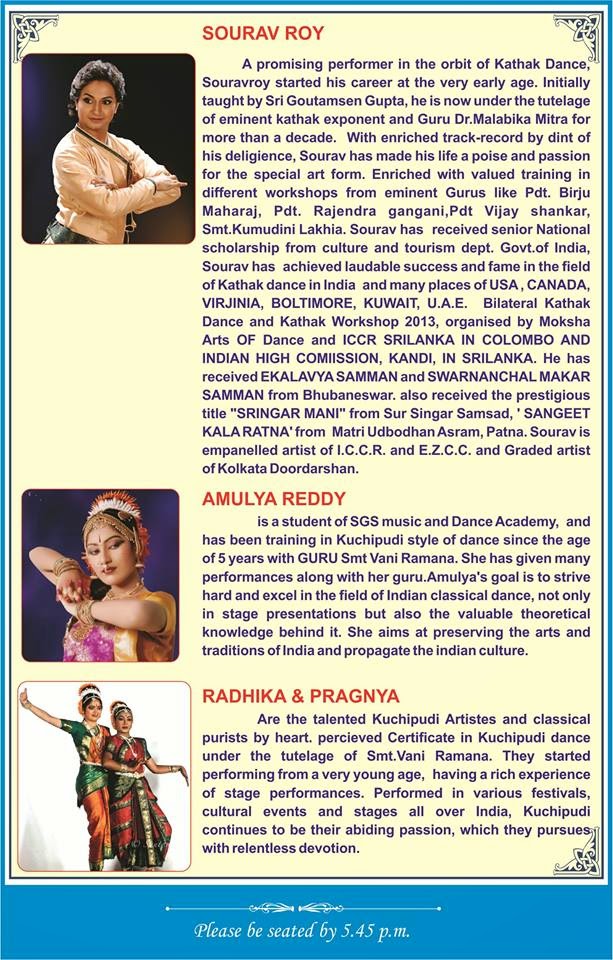NAVARASA – Expressions of Life
By
Ananda Shankar Jayant
And the
Shankarananda Kalakshetra ensemble
On 5th March 2015 , 7 pm
Ravindra Bharathi, Hyderabad
Performed by 9 dancers, this 40 minute production has received rave reviews from critics is
not to be missed.
Press Reviews
Ananda's treatment of the nine moods was unique
- Ranee Kumar, Hindu
Pulsating presentation of Navarasa..
- Shyamahari Chakra in Narthanam
A thoughtfully crafted production.
- Leela Venkataraman, Sruti
Shankarananda Kalakshetra
C-52, Road No.10, Film Nagar, Jubilee Hills, Hyderabad - 500033, India
E-mail: anandasj@rediffmail.com, URL: www.anandashankarjayant.com
(C), ananda shankar jayant, navarasa, ps telugu university, program note, mar2015, 5, priyalasya, papers, do not copy, copyrights acknowledged
By
Ananda Shankar Jayant
And the
Shankarananda Kalakshetra ensemble
On 5th March 2015 , 7 pm
Ravindra Bharathi, Hyderabad
Nationally awarded dancer, choreographer Ananda Shankar Jayant , celebrated as one of India’s most eminent and leading classical dancers, choreographers and dance scholars, presents her signature choreography Navarasa - Expressions of Life, at the 3 day Dance festival of the PS Telugu University
In this scintillating work ;Dr. Jayant moving away from myth and lyric, uses abstraction as a way to explore human experience and emotion , and strings together in an eclectic manner, the nine emotions of life through the mnemonics of music, body kinetics and pure dance . This critically acclaimed work , invites the audience to draw on the memory of their own personal emotions of everyday life . Winning standing ovations across the world at major festivals , Navarasa comes once again to Hyderabad
Performed by 9 dancers, this 40 minute production has received rave reviews from critics is
not to be missed.
Press Reviews
Ananda's treatment of the nine moods was unique
- Ranee Kumar, Hindu
Pulsating presentation of Navarasa..
- Shyamahari Chakra in Narthanam
A thoughtfully crafted production.
- Leela Venkataraman, Sruti
Shankarananda Kalakshetra
C-52, Road No.10, Film Nagar, Jubilee Hills, Hyderabad - 500033, India
E-mail: anandasj@rediffmail.com, URL: www.anandashankarjayant.com
(C), ananda shankar jayant, navarasa, ps telugu university, program note, mar2015, 5, priyalasya, papers, do not copy, copyrights acknowledged


.jpg)








